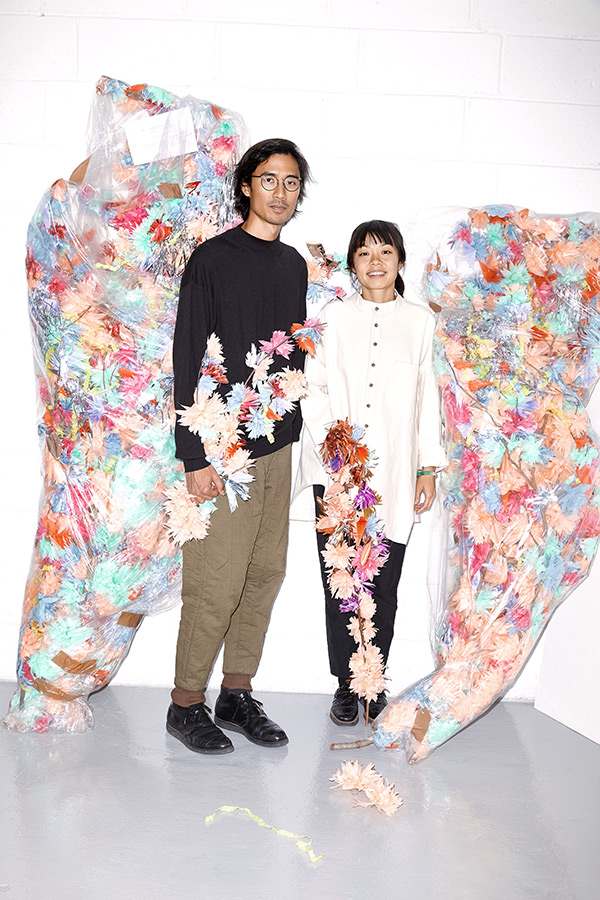Office – Tell me a bit about where you work. How have you created a space that is welcoming and inspiring?
Julie Ho – Well we’ve been in our space in South Williamsburg for over a year. We were in Chelsea before that, but we both live in this neighborhood so it’s more convenient. It’s nice to walk to work every day, and we also know people who have studios and artist spaces throughout the building. Our studio functions as a workshop, where we basically produce and create everything, and design on the computer, plus take care of everything administrative as well. The space itself, we started by painting everything white, including the floor, to have a clean, pure backdrop for our pieces. When people come in they’re always surprised, because we have lots of objects that we’re currently working on, and then we like to keep at least one piece from each past project, so those are all suspended from the ceiling, which creates a little cavernous, colorful space. We always have things that inspire us distributed throughout the area, little knickknacks and books and things that are displayed on shelves, hanging from different corners. One of our friends came in and said it felt like a Chinatown bodega or something. [Laughs] We both love going into little old dusty stores that have lots of things you can rummage through, where you can find really special objects, so we were super psyched that someone felt that from our space.
O – I feel like vertical space is important for that immersive effect, in those bodegas there is so much going on above your head, it’s more of a three-dimensional experience and there’s more to engage with.
Nicholas Andersen – Totally.
JH – Yeah and it’s sort of a mix of orderly and chaotic, like everything’s on shelves but you feel like it might be about to fall or something. So our space is playful in that way, but we know where everything is. We try to take advantage of the space as much as we can.
O – How did you both end up in New York?
JH – I grew up here, so after college I moved back to seek creative opportunities.
O – And Nick you grew up in Hawaii?
NA – I did, then I went to University of Michigan, and then moved to New York sort of on a whim, with just one suitcase. I started helping my friend out on her fashion line, and then sort of just fell into a series of fashion and styling jobs. One of my really good friends went to school with Julie in Baltimore at MICA, so we met through that mutual acquaintance. We’ve known each other for over twelve years, since before our business.
